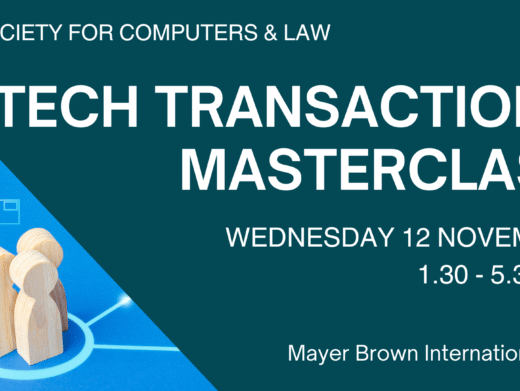Clive Davies condenses years of experience in IT contract delivery and suggests how the processes can be better handled by the lawyers.
I commenced my career in an in-house legal function, but one that also had an associated private practice. I stayed in industry with the energy and IT sectors before moving into private practice as a partner with two leading London law firms for a number of years. I then returned to an in-house role in the technology industry before starting my current role as a consultant. Throughout, I advised on numerous complex commercial contracts, notably for information technology and outsourcing services. Despite the change of legal vehicles, I observed that the services we provide, as commercial lawyers, remain essentially the same. We capture and document complex arrangements in a contractual vehicle negotiating as necessary with the counterparty to arrive at an accord that meets both parties’ expectations.
What has however struck me as a notable difference is the greater focus in house on the involvement in and resolution of the inevitable challenges with the delivery of IT and outsourcing services post contract signature. These do feature in private practice and indeed a former colleague of mine, who has a leading role as a partner in the technology practice of a London firm, told me recently that they still get instructed every year on the resolution of a significant number of IT contracts which have gone wrong before they reach their disputes department and go into “formal” litigation. However, in my experience, it is as an employed lawyer, whether in customers or suppliers, where these delivery difficulties manifest themselves more regularly as a part of day-to-day legal practice and represent more of a challenge. Even then there are some significant and perhaps surprising limitations in the way businesses continue to involve even their internal lawyers in these delivery issues. So, what are these problem contracts? Why do delivery difficulties occur? And how can we as lawyers, whether in-house or in private practice, best help to resolve the issues and, more importantly, prevent them from happening in the first place?
Complexity of Outsourcing Services
A Japanese legal colleague, possibly more accustomed to computer hardware sales than IT service contracts, once asked me in Tokyo what the differences were between a maintenance contract for computer equipment and an IT outsourcing service contract. I took a deep breath as it is a really good question and I wanted to do the answer justice. I explained that while the two types of contract both have a lot in common – delivery of a service to a specified standard for a set period in return for payment of a service charge – the essential distinguishing features of the outsourcing contract were the complexity of the service to be delivered and the associated intricacy of the contractual provisions required to document this in a way that met the expectations and requirements of the parties. The customer wants to receive a service that will enhance and improve their business operations and the supplier to deliver such a service for a reasonable financial return. However, in practice there is many a slip between cup and lip when achieving this in an outsourcing context. Whilst customers are generally good at setting out their expectations for such a service in broad terms, they and their advisers are often not good at articulating this with sufficient detail for suppliers to comprehend properly. In turn, the supplier will be trying to apply their standard offerings for, say, a desktop managed service to this particular contract and customer, sometimes shoehorning them into the required delivery. The problems of the complexity of the service and the lack of a true understanding by both parties are then compounded by the procurement processes typically adopted by the buyer.
Flawed Procurement Process
Customers will generally ask for bids from a number of suppliers then whittle this down to a short list with whom they have detailed discussions. However, even then the gloves remain on to some extent, as the customer tries to achieve the best price whilst preserving a competitive process, and the supplier to win the bid. Meaningful discussions on requirements and solutions often take second place to a results and price driven procurement. So, unless further detailed discussions occur with the selected supplier (which may be limited in the public sector by procurement rules such as the UK Procurement Act 2023 and related regulations[1]), the real requirements of the customer are rarely mapped properly onto the delivery offerings and capability of the supplier. The final supplier selection will often be so cost driven that bidders are tempted to cut their costs to try and win at a late stage of the procurement process. To achieve this, they go through a process sometimes called “cost scrubbing” where the carefully worked out costs of delivery components, including supplier and subcontractor charges, are further reduced in a final effort to be chosen as the selected supplier. Sadly, this is a recipe for subsequent failure where the customer’s chances of seeing a successful contract delivery are significantly diminished and the supplier’s reputation and profits are put at risk. It really is a case of being penny wise but pound foolish. These procurement processes will not typically be the exclusive province of legal advisers, but I suggest that, armed with this knowledge, we can seek to influence and improve them.
Contract Structural Issues and Legal Role
We do usually take more primary responsibility for contract structure and creation. Our skillset is in understanding the bargain struck by the parties and expressing that in precise contract language. IT service delivery is ultimately about providing a specified service, on time and to agreed service standards for a fair price. Unfortunately the way outsourcing agreements are currently constructed, priority is typically given to the front end “legal terms and conditions” which receive (at least from the lawyers involved) disproportionate attention by contrast to the incorporated “schedules” in which the really critical matters are articulated (or not as is too often the case). When there is a troubled or disputed delivery there can be extensive legal arguments (ultimately in court or an arbitration) over the wording of liability clauses or the application of indemnities. In my experience, the root cause of these problems that drag the parties into this unenviable and expensive situation arise from these so called “subsidiary” schedules. However, the services to be developed and delivered, the charging regime or service levels and associated processes such as service acceptance may not be adequately thought through, understood and documented in the contract giving rise to confusion and service delivery failure.
Drafting these schedules is not an easy task, and it is so tempting as a lawyer to take the easy route and delegate creation of these crucial contract components to our technical architect colleagues or financial experts. This, to me, is a derogation of our responsibilities. We have, as IT lawyers versed in these issues, a particular skill set which enable us to understand, articulate and document complex matters in whatever discipline they may arise. We can, and should, work closely with colleagues from other disciplines to provide the core technical content, but also work to ensure there is a true understanding by both parties. Our core skill sets then enable this accord to be articulated and drafted in appropriate and clear contract language incorporating the necessary concepts and related detailed provisions. These operational schedules also need to be applied and incorporated into the contract structure using, for example, the agreed definition regime. Time after time I have seen technical authors ignore them and create their own standalone schedule repeating primary obligations and containing a glossary of terms which conflicts with the definitions schedule. Surprisingly these schedules are often accepted by their legal advisers, perhaps because it is too difficult and time-consuming to create one comprehensive set of definitions.
This all manifests when problems and challenges arise as they invariably do with the delivery of these complex contract services. The challenges can typically be divided into two phases, each of which can have unique legal problems which are often not fully appreciated or anticipated. The first is the development and transformation phase when the supplier working with the customer creates the contract deliverables, often adapting its own offerings and those of its subcontractors. Payment of charges will be against achievement of agreed performance milestones. The second, assuming the first phase is successful, is when the contract moves into the second steady state phase when the services are delivered and regular service charges paid.
Project Phase Problems
During the initial project phase, the supplier will be tasked with transitioning and usually transforming the required services to meet the new contract requirements. Typically, this occurs over a six to nine month period after signature, when the supplier discovers that it’s offering as developed and implemented, does not work to the required contractual standards and so does not meet the expectations of the customer or the agreed project plan. With the contract now cast in stone there is little room for flexibility, resulting in inevitable delay and failure to meet project milestones which are linked to the payment of charges to the supplier. This then brings into operation the contract mechanisms for managing this situation, such as delay notices, which often create an adversarial situation that does neither party much good. Instead of focusing on a solution, both sides are distracted by the potential adverse consequences. The customer fears it will not receive what it has expected and cannot realise the savings and service improvements it has forecast and anticipated. The supplier worries about an onerous contract where its costs are higher than expected so it cannot make a return as well as the potentially adverse effect on its reputation in the marketplace.
A curious phenomenon then emerges. As a part of the contract we have been properly involved with as lawyers, we will have created a regime articulating what should happen if (or rather when) there is a project delay. There will be a specified process enabling the supplier to advise the customer of the situation by some form of written notice followed by an escalation to a project board and then to senior management. The process is designed to help recognise and resolve the issue by bringing in resource and skills as necessary. However, the sad reality is that the supplier and the customer are typically very reluctant to utilise these very contract processes carefully designed for this occurrence. The supplier seems to fear the wrath of the customer receiving a formal “contract notice”, while the customer will often actually counsel the supplier against “escalating” an issue. The lawyers are kept in the very far distance with the project teams hell bent on resolving the challenges themselves.
This is, frankly, a recipe for disaster. By the time the scale of the delivery problems is recognised outside of the immediate teams, the contractual situation is typically far worse, particularly for the supplier, than it need be, and the project will be spiralling out of control. This is of course not only a legal problem but an issue for senior management and the organisations concerned as a whole. A failed IT project involves both parties in additional cost and effort, often nullifying the anticipated benefits. The customer will not achieve the service improvements and savings it seeks and will have to retain its existing suppliers for longer at additional cost. The supplier will be burning resources and cost trying to resolve the delivery challenges whilst maintaining its relationship with the customer in particular, and in the marketplace more generally. If they are wise, both parties will also want to avoid a protracted formal dispute resolution process. Of course, these processes have their place and provide ultimate safeguards for the parties, but they are often drawn out meaning the original contract and its intended benefits are long gone.
Project Phase – Legal Contributions
So how can we mere lawyers help prevent and mitigate these project delivery problems? The first and most critical quality we bring to the party is intellectual rigour, both during the contract formation phase and when the subsequent problems appear. We must question and probe our clients to help them properly understand and articulate their requirements and delivery capabilities. In many ways it is not just the written contract words that matter, but the understanding that lies behind them which only a proper engagement between customer and supplier will achieve. Our knowledge and experience of what can go wrong should inform a customer on the best procurement route to achieve, not just a fair price, but an effective contract bargain which will deliver the best results. If, as advisers to a supplier, we witness a lack of true understanding of the required solution or cost scrubbing to the point where profit is at risk, we should have the courage to take this up with senior management, who may well be receptive to the risks of proceeding in this situation. It is here where the boundaries of AI appear in my view. Yes, AI can assist in drafting processes and risk mitigation, but it takes an experienced professional to put their hand up, if they are bold enough, and articulate the opportunities and associated risk involved with an anticipated problem delivery.
If all this fails, and milestones are slipping, then we can bring our legal approach and skills to help invoke the contract delay and dispute provisions in a professional manner, often utilising our relationship with lawyers (or commercial managers) on the other side to take as constructive an approach as possible in the circumstances. We can help other colleagues assess whether the project is truly doomed because, for example, the technology involved will never work to meet the expectations of the customer, or more positively that the service can be developed and delivered effectively, but more time or resource is needed. We can then advise our client’s project and, crucially, senior management on the contractual options available to them. It may even be that the customer agrees to pay more for the successful conclusion of the project phase so it gets the service it requires without an expensive re-procurement exercise and/or a time consuming and distracting dispute. Our legal skills can then be deployed in negotiating and articulating a contract reset in an amendment or change control note (see below) to reflect the agreed way forward. I have seen this detailed involvement work in-house and even in private practice far more effectively when, as lawyers, we step up and take a proactive and leading role rather than just providing reactive advice.
Steady State Challenges
Having successfully navigated the project phase and moved into service delivery you might hope all the legally related troubles are over until the end of the contract period and that our skills as contract lawyers will be redundant. This is far from the case in my experience especially in-house but also to some extent in private practice. One reason for this is that, after the pressure and excitement of negotiating, contract signing and the project phase, lawyers (and increasingly commercial contract advisers) are generally removed from the scene and the delivery team of the supplier and the relevant business function of the customer take over. Their task is to give effect to the hard-won contractual accord and operate and manage the delivery of the (now developed and accepted) steady state services. The supplier team typically comprises delivery executives and others tasked with managing contract performance utilising service desks and other mechanisms to manage and measure service performance. The customer team will usually be the IT department and various user groups. In my experience, this is when the carefully crafted written agreement is ignored and “put in the bottom drawer”. For example, most well written IT outsourcing contracts contain a governance process which facilitates the exchange of information and management of service performance at project level, with more senior review meetings to check progress and act as an escalation point. Rather depressingly, I regularly see these well considered and useful processes ignored or fall into disuse after a few months. I recall a delivery executive, new to the company I advised, who simply ignored the actual contract document and these sorts of agreed procedures and applied those from the last contract he had delivered in his previous company – because he was used to them and liked how it worked! Not surprisingly when contract performance went wrong under this new agreement, there was a resulting complex contractual and procedural conundrum that took a lot of effort to disentangle.
Legal Contributions – Contract Handover and Deep Dive Reviews
You may well argue this is not a legal problem, but a management one. I agree, but even so there are key steps we as professional advisers can advocate and encourage to reduce these risks. The first and most obvious one is to have a proper handover by the bid team to the delivery or receipt team where they explain the contract, its processes and how they are meant to be applied in practice. More radically, this could even encompass a joint session between customer and supplier to cement a common understanding. All the agreed contract information should also be readily available in a manageable form. Bid teams usually use Teams and SharePoint sites very effectively to manage the development and negotiation of the front-end terms and conditions together with the thirty or forty schedules which constitute the contract. Too often, the site is abandoned once the contract is signed, when it could be transformed into an effective working platform for the delivery phase where all the key contract material can be made available in a readily accessible form. AI could be used as an effective tool to help evolve this key information.
The other phenomena I have observed is the tendency for all delivery (and service receipt) teams to go native and keep contract performance as a closely held secret, begrudgingly briefing upwards in their organisations only when absolutely necessary. This may protect the immediate teams but makes it hard for both the customer and the supplier to detect and monitor potential problem areas with the contract at an early stage, and take the opportunity to deal with them. This tendency occurs in the project phase discussed above but also in steady state performance. A lack of management or corporate visibility then manifests if there are challenges with, for example, service level performance or if there is some security breach or other contract delivery challenge.
To manage and mitigate this, I advocate introducing the concept of a series of timely, effective deep dive reviews of contract performance. These would involve the legal, commercial and business management functions carrying out an onsite in-depth review with the contract performance and delivery teams looking for any problem areas and also opportunities for service delivery improvement. These can be vital during the project phase but are also viable as a mechanism for carrying out spot checks on regular service delivery. As lawyers we can both initiate such reviews and participate in them, bringing to the table the same skill sets and forensic analysis we provided during the bid and contract creation phase.
Post Contract Change Control
A feature of IT law and contracting is that the technology and the associated legal regulation are in a constant state of flux and evolution. From telexes and faxes, through email to instant messaging, communication techniques have radically changed and improved. Word processors have evolved through standalone PC’s to networked systems with applications run remotely on the cloud. Currently AI is the subject of much debate and regulation such as the EU AI Act.[2] Even during the say 5-year lifetime of an IT outsourcing contract (and many are extended and run far longer) the client requirements and solution will evolve to keep pace with changing technology and solutions. Service levels that seemed appropriate at commencement may prove inadequate or inappropriate in practice. As customer requirements change and evolve, suppliers may be able to offer improved solutions through a continuous improvement process incorporated into the contract.
Accordingly, all outsourcing contracts should be designed to include a process whereby the service and related procedures can be adjusted and adapted over time. These will be articulated in a schedule which sets out a change control procedure for evaluating and costing any proposed changes. Typically, these will be triggered by a customer or supplier request followed by an impact assessment of the potential consequences (normally carried out by the supplier) and a change control note in an agreed and specified form which amends the contract. The English Supreme Court has in effect supported this process when it held in Rock Advertising Limited v MWB Business Exchange Centres Limited[3] that if a service contract requires changes to be in writing, then the parties are obliged to follow this process. Therefore, if the agreement contains a provision saying it cannot be varied orally (a “no oral modification” clause) then this is legally effective and variations must be in written form. I suppose it would be open to the parties to agree in writing that there could be oral amendments, but this level of legal sophistication will not generally be considered by delivery executives.
This all sounds fine and is a sensible process which is usually well-constructed and thought through and set out in the agreement. However, in practice it requires the supplier and the customer to operate this change control process in a professional manner keeping a proper record of all such changes, because ultimately if there is a dispute the contract will have been amended by the change control notes. This may happen as planned especially if lawyers or commercial advisers are involved. Yet my experience is that the application of change control procedures in practice may be somewhat haphazard. I was once called in to advise on a public sector contract which required a mid-life reset and had an unusual change process. Because of the complexity and time of properly documenting changes, the parties had agreed a quite reasonable process under which a brief record of each change was kept which would then be consolidated into a proper change control note on a regular basis at a later date. When I enquired how many of these abbreviated changes there had been I was told several hundred over a number of years. Perhaps inevitably, it transpired that only a handful had been properly consolidated! Changing the contract became a considerable challenge because neither party knew, with any degree of certainty, what its current provisions now were.
Contract Change – Legal Contributions
So how can we as legal advisers meet this challenge, especially when it will not be efficient or economic to involve us in every contract change? The first task – which is generally well done – is to incorporate an effective and workable change process in the contract. The second is to encourage our client or company to establish a system of collating and keeping an effective record of all changes. Thirdly, we can incorporate a review of the operation of the change mechanism in the deep dive review I advocate above. Fourthly, we can provide for a process whereby the changes made over a six or twelve-month period are incorporated into a conformed copy of the contract so there is one version of the truth. As I have tried, to explain to colleagues charged with contract delivery, sometimes unsuccessfully, the actual legal contract will still be the original version and the various changed notes which amend it. Nevertheless, the conformed contract process creates a viable document which shows the current state of the agreement for the benefit of both parties.
Governance Processes
One of the processes usually included in a detailed contract schedule is contract governance. This provides a mechanism during the both the project and steady state service delivery phases, for customer and supplier to engage at different levels within their organisations to discuss and promote the delivery of the contract service. This will involve project or delivery level meetings – perhaps every week initially and monthly after service acceptance – where the detailed contract performance is discussed and reviewed. This could entail the operation of an obligations tracker which shows the delivery status of the service and the achievement or otherwise of supplier obligations and customer responsibilities. Some lawyers fear that this process, and any associated written records, will provide damaging evidence of breach of contract. I suggest that the opportunity to hold these discussions is more likely to prevent the contract performance problems in the first place. These working level meetings can then be supported by one or two further levels of regular senior management review to help identify and resolve problems before they become more terminal. These processes can also be used in the first stage of contract dispute resolution to be operated prior to any more “formal” dispute resolution processes such as mediation.
As lawyers we can, and generally do, seek to ensure that these governance provisions are properly recorded in the contract and workable in practice but there our involvement often y ends. Why could we not be a part of and contribute to more senior management reviews, attending review meetings and providing our experience and knowledge to recognise, prevent and, if necessary, resolve difficult contract issues? After all we will have helped to create this contractual behemoth in the first place and should have as good an overall understanding as any about how it is intended to operate.
After Care Legal Service Package
Against this background, it seems to me that, as lawyers and as commercial advisers, we should offer an after-care service to manage and operate these processes and mitigate and resolve problems on complex and critical contracts. This could involve the following.
- A proper handover helping to create the information and tools related to the contract so vital to delivery managers.
- Continued participation during the project phase via attendance at senior management governance sessions.
- Providing a hotline using IM where concerns and questions about the contract can be raised by the delivery team.
- Quarterly contract reviews during the project phase moving to six months for steady state delivery.
- Maintain some continued engagement through these reviews or otherwise with the legal and commercial team for the other party.
- Regular review of the application of the change process.
- Support for the creation of conformed copies of the contract.
To some extent these touch points should happen in-house anyway but rarely do in practice. at least in an organised and structured way. It tends to be more a firefighting service addressing problems when things have gone wrong. Private practice solicitors are even less likely to be involved except for a major reset or dispute. However, here I suggest there is an opportunity to maintain contact with a client for perhaps a modest fee which could not only prevent problems but also put the law firm involved in a very good position to advise on (and charge fees for) the resolution of more complex issues. It is also a way of maintaining close relationships with a client who may otherwise only consider instructing you on the creation or termination of an IT service contract.
Conclusion – Furthering the Legal Profession and the IT industry
I am here advocating for more extended legal and commercial involvement in IT outsourcing service delivery. This is not for the purpose of promoting the status of in-house lawyers, or of providing a fee earning opportunity for private practice lawyers, though these may be among the beneficial outcomes. Instead, I am seeking to articulate the challenge and propose viable ways in which we as legal advisers in-house and in private practice can bring our skillsets and experience to bear in assisting in the effective creation and delivery of these complex service contracts. This is I suggest not only in our interests because it promotes and furthers our professional contributions but can significantly assist in enabling the customers and suppliers of IT outsourcing contracts to achieve their organisational and operational objectives.

Clive Davies is an experienced IT outsourcing lawyer who has worked extensively in-house and in private practice and now operates his own legal and business consultancy Clive Davies Consulting.
[1] https://www.gov.uk/government/publications/procurement-act-2023-short-guides/the-procurement-act-2023-a-short-guide-for-suppliers-html
[2] https://artificialintelligenceact.eu
[3] http://www.bailii.org/uk/cases/UKSC/2018/24.html




